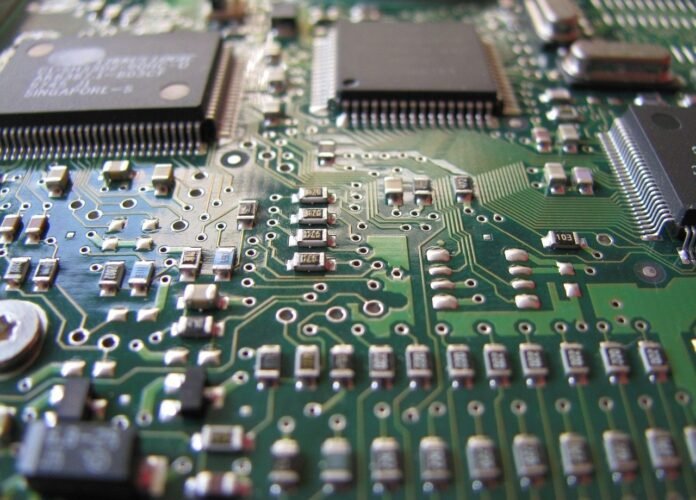In the realm of computer hardware, two crucial components play a pivotal role in determining system performance: RAM vs. SSD. While both RAM (Random Access Memory) and SSDs (Solid State Drive)contribute to a device’s overall speed and responsiveness, they serve distinct purposes. Let’s delve into the key differences between RAM vs. SSDs, highlighting their roles, benefits, and how they complement each other in optimizing the performance of modern computing systems.
Understanding RAM:
Random Access Memory, or RAM, is a type of volatile memory that temporarily stores data that is actively being used by the computer’s processor. It acts as a fast-access workspace where the CPU can quickly retrieve and manipulate data. The more RAM a system has, the more data it can store and access simultaneously, resulting in improved multitasking capabilities and faster response times.
Exploring SSDs:
Solid State Drives, or SSDs, are non-volatile storage devices that store data in integrated circuits using flash memory technology. Unlike traditional hard disk drives (HDDs), SSDs have no moving parts, which significantly enhances their performance. SSDs excel in providing fast read and write speeds, reducing boot times, launching applications swiftly, and improving overall system responsiveness.
RAM vs. SSD:
Complementary Roles: RAM and SSDs have distinct roles within a computing system. RAM focuses on providing temporary, high-speed access to data actively being processed by the CPU. On the other hand, SSDs are responsible for the long-term storage and retrieval of data, including the operating system, applications, and user files. While RAM directly affects the real-time performance of the system, SSDs contribute to overall system boot times, application loading times, and file access speeds.
Performance Impact:
RAM’s impact on performance is immediate and tangible. With more RAM, the system can keep a larger amount of frequently accessed data readily available, reducing the need for data retrieval from slower storage mediums. This results in smoother multitasking, efficient handling of memory-intensive applications, and faster response times. However, RAM’s limitations become apparent when its capacity is exceeded, leading to increased reliance on other storage options, such as SSDs or virtual memory.
SSDs, with their fast read and write speeds, significantly enhance system performance by reducing data access times. They store and retrieve data much faster than traditional HDDs, resulting in quicker boot times, faster application launches, and improved file transfer speeds. By replacing slow mechanical components with electronic circuits, SSDs eliminate the bottlenecks associated with HDDs, making them ideal for storing and accessing large amounts of data.
In the RAM vs. SSD debate, it’s important to understand that these two components serve different functions but work together to optimize system performance. RAM provides immediate, high-speed access to data actively processed by the CPU, enabling efficient multitasking and responsiveness. SSDs, on the other hand, excel in long-term storage and retrieval of data, significantly improving boot times, application loading speeds, and overall system responsiveness.
To maximize performance, it is recommended to have an adequate amount of RAM to support your multitasking needs, while also investing in an SSD for faster storage and retrieval of data. A balanced combination of sufficient RAM and a speedy SSD will result in a seamless computing experience, where responsiveness, multitasking capabilities, and data access speeds are optimized.
Ultimately, the choice between RAM and SSD depends on your specific computing needs and budget. Assessing the demands of your applications and workflows will help you determine the ideal configuration to achieve an optimal balance between speed and storage, ensuring a smooth and efficient computing experience.
RAM vs. SSD: Choosing the Right Component for Your Computing Needs

Opting for RAM:
Random Access Memory (RAM) plays a vital role in multitasking, ensuring smooth operation, and handling memory-intensive tasks. Here are some scenarios where investing in additional RAM is beneficial:
Multitaskers and Power Users:
If you frequently work with multiple applications simultaneously, such as running virtual machines, video editing software, or complex simulations, investing in more RAM is crucial. Additional RAM allows your computer to store and access larger amounts of data, reducing the need for constant data retrieval from slower storage devices. This results in improved multitasking capabilities, faster application switching, and smoother overall performance.
Content Creators and Gamers:
Content creators, video editors, graphic designers, and gamers often work with large files and resource-intensive software. These applications demand substantial amounts of RAM to process data efficiently and deliver real-time performance. Investing in ample RAM ensures smoother rendering, faster editing, and seamless gameplay, minimizing lags or slowdowns.
Developers and Programmers:
Developers and programmers working with resource-intensive IDEs (Integrated Development Environments) or running virtual environments for testing code can benefit from increased RAM. The additional memory allows for smoother code compilation, faster program execution, and efficient handling of multiple processes simultaneously.
Harnessing the Power of SSDs:
Solid State Drives (SSDs) offer significant advantages in terms of storage speed and reliability, making them beneficial in various scenarios:
Everyday Users:
For everyday users performing typical tasks like web browsing, emailing, and document processing, SSDs greatly enhance the overall user experience. With faster boot times and quick application launches, SSDs significantly reduce waiting times and improve system responsiveness.
Laptop and Portable Device Users:
Users who rely on laptops or portable devices benefit immensely from SSDs due to their durability and resistance to physical shocks. SSDs lack the moving parts found in traditional hard drives, making them less susceptible to damage caused by sudden movements or bumps. The increased speed and improved battery life of SSDs further enhance the usability of portable devices.
Storage-Dependent Professionals:
Professionals working with large files, such as photographers, videographers, and audio engineers, require fast and reliable storage solutions. SSDs provide swift access to these files, enabling efficient editing, rendering, and exporting processes. Additionally, professionals who deal with sensitive data can benefit from SSDs’ encryption capabilities, ensuring data security.
For optimal performance, a balanced combination of sufficient RAM and a speedy SSD is recommended. Assessing your usage patterns, the demands of your applications, and your budget will help you make an informed decision. Ultimately, investing in the right component, whether it’s RAM or SSD, will significantly enhance your computing experience and improve productivity.


